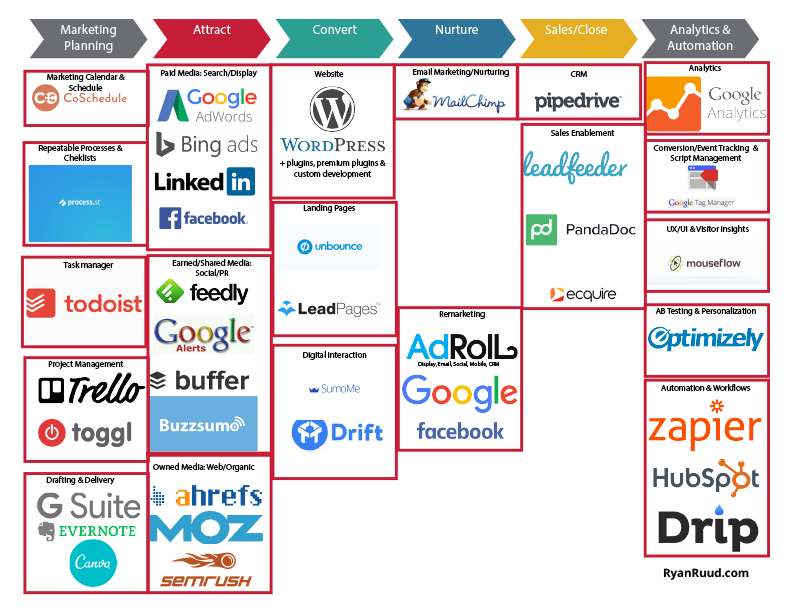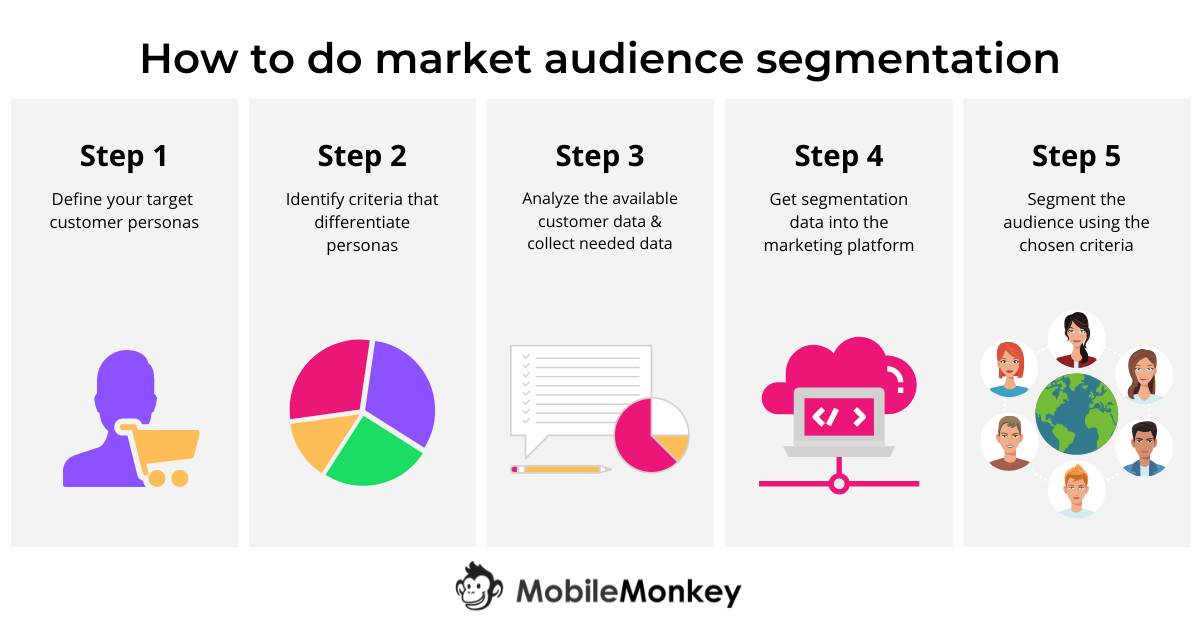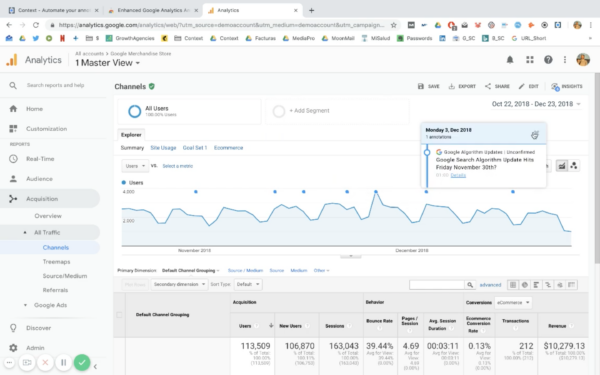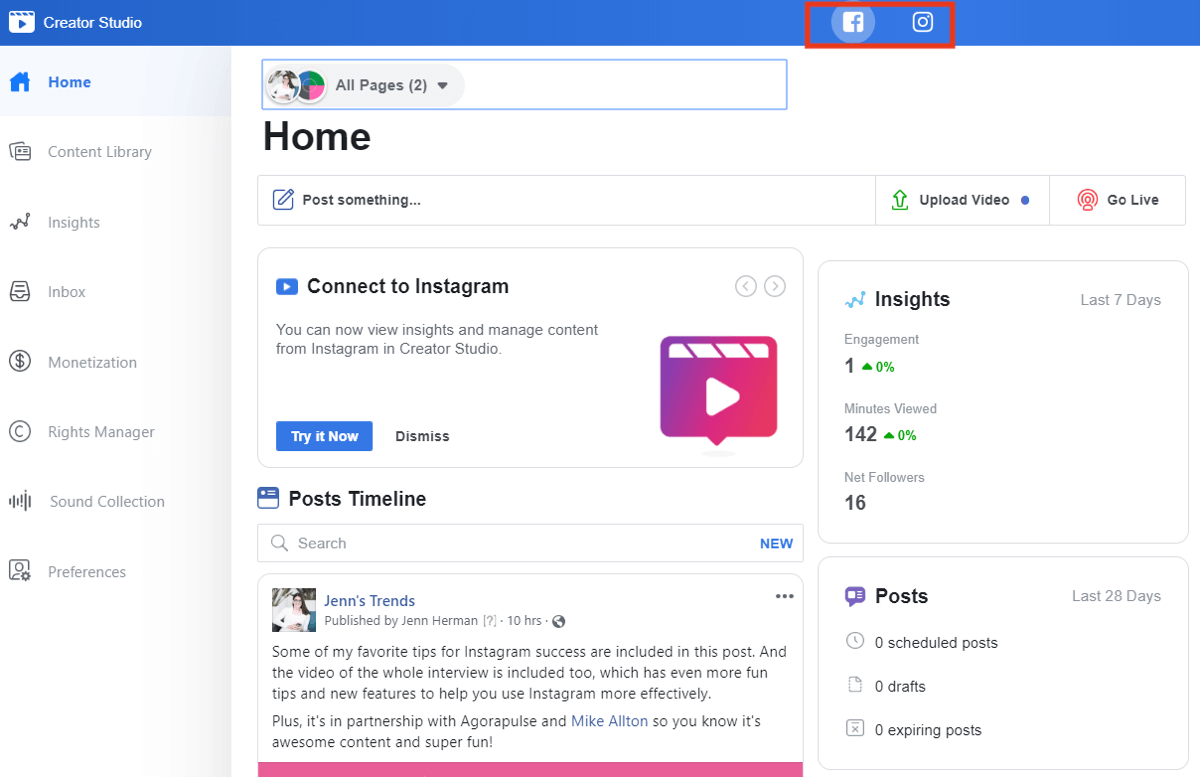Marketing technology, or MarTech, is a fast-paced industry with new updates every year. MarTech has given 21st Century marketers the ability to cut costs, increase sales, and shrink the amount of labor typically required to keep track of various marketing components.
But perhaps the most impressive offspring of MarTech is digital analytics. By combining various digital capabilities, marketers can track nearly every consumer behavior imaginable. Because of this, mapping the customer journey has never been easier or more vital to business success.
Your Digital Marketing Stack
In MarTech, your digital marketing stack is your collection of software programs that help you track lead generation, sales, advertising, productivity, and customer service data.
Today, no digital marketing stack is complete without some level of customer, web visitor, affiliate, or even employee data tracking. This tracking requires the help of analytics platforms.
What is Digital Analytics?
Digital analytics is the process marketers take to track key performance indicators or metrics.
Today’s digital tools – computers, mobile devices, and software platforms – collect data. Initially, the volume of data recorded from these digital tools was overwhelming for everyday marketers. Within a few years, experts developed ways to organize data into actionable insights.
Now, digital analytics helps specialists in every field (marketing, finance, human resources, medical, etc.) to collect, organize, filter, and understand information about a target audience, industry trend, and/or team performance. Digital analytics is categorized into either quantitative or qualitative information:
- Quantitative data pertains to the literal number of times a particular action or event occurs. It is the easiest type of data to understand because it represents hard and fast numbers, such as the number of sales or the number of times a user visits a web page.
- Qualitative data takes a deeper look at quantitative data to understand how, why, and to what degree a certain action occurred. For example, customer feedback in their own words counts as qualitative data. All non-numerical data falls under this category.
Properly combining all available quantitative and qualitative data helps an analyst or marketer get the “full picture.”
The primary goal of digital analytics is to inform decision-makers on the best course of action. In marketing, analytics tells experts who their customers are, why they buy, and the most efficient process for converting those customers.
Databases
Much of today’s data is stored in various types of databases. A great, universal example of a database is an Excel spreadsheet.
Modern databases carry data points within gargantuan databases many times larger than the average office spreadsheet. These digital warehouses help developers recall critical bits of information to build today’s foundational applications and software programs. In marketing, databases store raw data for which the marketer needs a specific platform to organize, sort, and build reports.
Consumer Data Privacy
With today’s cloud computing technology, user behavior online is tracked in detail. As one would expect, consumers feel nervous at the prospect of various organizations storing and using data unique to them.
As such, government initiatives like the GDPR and the CCPA are helping consumers protect their personal information while providing guidelines for businesses to continue offering personalized services.
Consumer data privacy doesn’t have to stop you from collecting and organizing user behavior data. In fact, marketing today demands that you take analytics seriously if you want to remain competitive in your industry.
As your business adds digital analytics capabilities to your operations, it’s critical that you understand what it means to be compliant with federal and state consumer privacy laws. Taking compliance seriously will help you build trust with buyers as you apply consumer data to deliver personalized products and services.
Why User Data Matters
The key to marketing is knowing your audience. User data on your website and online store or in response to your paid advertising can help you understand your target audience. After doing so, you can segment your audience into multiple categories or niches.
The better you know your audience, the easier it will be to acquire new customers and retain them.
With each new tidbit of information about members of your audience, you learn to appreciate their problems, needs, desires, and so much more. The more actionable data you have, the better your decisions will become.
Main Categories of MarTech and Digital Analytics
Website Analytics
The purpose of website analytics is to understand who your website visitors are, where they come from, and what they do while on your website.
Within the world of web analytics platforms, there are programs that track basic metrics and others that go more in depth. The most used web analytics tool is Google Analytics (GA). And while GA is free (along with its complementary tools like Ads and Tag Manager), it is not the most user-friendly platform on the market unless you are well-versed in analytics software.
The volume of your website traffic should determine how much you invest in an analytics platform. If you currently see less than 500 visits per month, you shouldn’t need anything too robust. However, it may be worth your time to learn GA or hire a website analytics specialist if your website is a key source of lead generation and you see 1,000 or more visitors each month.
SEO Analytics
Whereas website analytics software focuses on the relationship between your existing web visitors and your website, SEO software focuses on the relationship between your website and search engines.
Search engines (like Google) assist website visitors that have a question or don’t know where to start when finding some key piece of information. Search engine optimization is the process of understanding how well your website performs on search engines.
SEO analytics platforms help you see how your website compares to other websites in your industry, as well as the terms that consumers use to find content that your website offers. These terms are your site’s “keywords.”
In order for search engines to understand your website, they need to crawl your website and index it. Your site’s keywords help search engines judge the value that your site has to offer to users so that it will always know the best pages to list on a search engine results page (SERP).
Social Media Analytics
Social media analytics helps you track the performance of your social media content.
Today, social media is the best place to nurture customer word-of-mouth and user-generated content. The better your social media performance, the greater your brand awareness, brand sentiment, and social influence.
To measure the value of your social media presence, these platforms track your posting frequency, as well as the number of engagements each of your posts receives. An engagement occurs anytime another social media user interacts with your post, including reactions (likes), comments, shares, etc.
Customer Relationship Management (CRM) Software
CRM software stores all customer or client information that is relevant to your business. Not only does it record static information about your customers, prospects, clients, and affiliates, but it also tracks customer interactions.
These interactions naturally include purchases, and they also include complaints, referrals, and more. Modern CRM software helps businesses organize customer feedback, lead generation, churn, contracts, sales data, and audience segmentation. Many of these platforms also automate email/SMS reminders, generate web forms (landing pages), integrate with POS systems, and assign team members critical tasks for efficient project management.
Influencer Relationship Management (IRM) Software
Influencer relationship management, or IRM, is a fairly new addition to the world of MarTech. Before 2018, most influencer relationships worked much like affiliate relationships.
These influencers would leverage online content to build engaged audiences and then join an influencer network (similar to an affiliate network) to indicate their willingness to work with brands. This “middleman” approach to influencer marketing worked for a time, but there were two critical problems:
- Not all influencers were equally influential (many of them preferred money over authentic consumer relationships); and,
- Not all brands were desirable matches for serious influencers.
As a result, some brands bypassed influencer networks and began reaching out to influencers directly on social media. This approach worked – brand-influencer relationships were more authentic and produced a much higher ROI.
But brands had a new problem. Managing these direct influencer relationships in house were too intense for manual tracking systems, such as spreadsheets. Furthermore, CRM programs didn’t cater to the specific needs of managing an influencer program.
As a result, IRM software gained notable traction in the last three years. These influencer marketing platforms combine social media analytics with customer relationship management to help brands nurture high-performing influencer programs.
Content Management System (CMS)
The rise of inbound marketing, SEO, and content marketing have led many brands to invest in platforms that help them organize their website content. More specifically, informative written content (blogs and articles) helps websites attract customers online and increase that site’s performance on search engine results pages (SERPs).
Content management systems (CMSs) help marketers track content production, workflow, and revisions. More of a productivity tool than an analytics tool, many CMS platforms are still equipped with basic publication tracking, such as post quantity, publication frequency, content type, internal links (links between pages on your website), keyword use, number of revisions, and more.
In order for marketers to measure content performance online, they need to integrate their CMS with a web analytics or SEO platform (or both).
PPC Analytics
Pay-per-click, or PPC, is the most common form of digital paid advertising. Advertisers that utilize search engine marketing or social media paid advertising use some form of PPC platform to manage their ads.
PPC analytics measure the effectiveness of your digital ads. These platforms are usually free and hosted by the website or channel on which you’ve chosen to advertise (i.e., Google Ads, Facebook Ads, etc.).
On most PPC analytics platforms, you pay per link click or conversion. Experienced PPC marketers use these platforms to target ideal audiences based on their online activity and demographics. They also make extensive use of A/B testing (running two or more variations of the same ad during a campaign) to refine ad content for best results.
Mobile App Analytics
As online activity goes mobile like never before, marketers are also tracking user behavior on mobile applications. As the name implies, mobile app analytics tracks user behavior on a particular app, including downloads, actions, session duration, purchases, and more.
As a disclaimer, websites that are “mobile-friendly” don’t require mobile app analytics platforms to track performance. Visitors accessing your website on their smartphones will register normally on your web analytics platform.
Technology’s Biggest Pain Point: Integration
Unfortunately, the list above is not exhaustive. For eCommerce sites or digital marketers that manage various components in a robust marketing mix, the number of platforms required to track ROI can be overwhelming.
However, if a business can find the tools that they need to integrate various analytics and productivity platforms, then they can simplify their process and still enjoy all the benefits that digital analytics offers. But not all platforms integrate seamlessly.
For some operations, there are digital plugins that allow marketers to “do it all” in one online dashboard. But larger operations may be too big for a CMS and a handful of plugins.
The largest companies often leverage the expertise of digital transformation agencies to create custom solutions. While the initial cost can be high, the integration is more sustainable and will save the company many more times their investment in ongoing operating costs.
In Conclusion – Which Analytics Tools Does Your Business Need?
Embracing MarTech for your business doesn’t mean that you need every analytics and productivity solution out there. For small to medium enterprises, sometimes all you need is one or two SaaS providers (such as Google, Salesforce, WordPress, etc.), and you’re good to go.
But if you want to scale your business, you may need analytics tools and integrations that are specific to your operations. When you reach this point, you should consult a digital transformation agency. Until then, what’s most important is that you use the tools you have to better understand your audience and look for ways to “work smarter, not harder.” If you take this approach, MarTech solutions will present themselves to you, and you’ll know when is the right time to grow your digital marketing stack.
Digital & Social Articles on Business 2 Community
(69)











